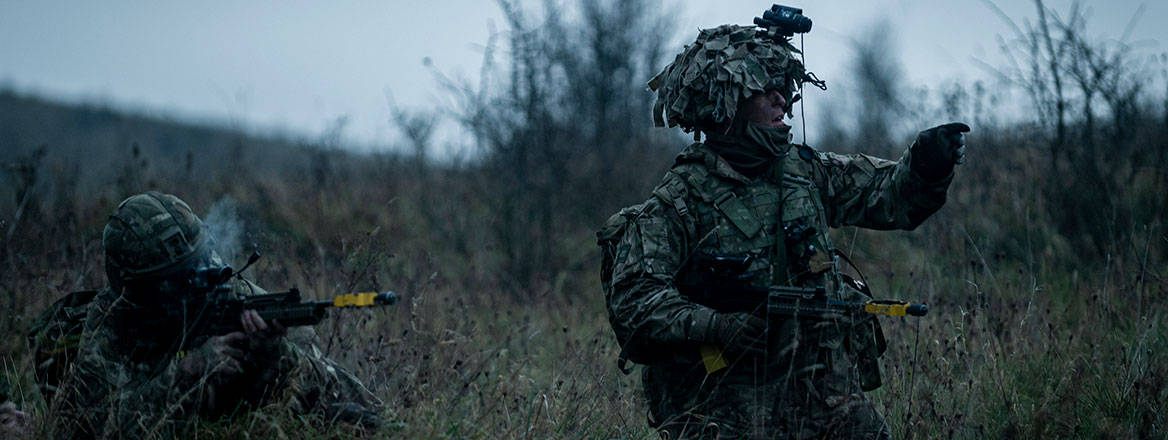The war in Ukraine has showed that mass is an important component of fighting power. For the UK, investments in reserve forces could be an effective way to achieve it.
Executive Summary
The war in Ukraine has demonstrated the importance of mass. Quantity has a quality all of its own, but regular soldiers are expensive. Most of the Ukrainians fighting in the current war are not regular soldiers, and reserve units like the valiant Azov battalion, who held Mariupol for so long, have played a critical role.
Our European allies have grown, or are growing, volunteer reserves to constitute a large component of an affordable peacetime framework that can deliver capacity in the event of war. As an island nation whose armed forces have an expeditionary focus, our best comparators are our Anglophone counterparts in the Five Eyes pact – countries that share an expeditionary focus and a tradition of voluntarism rather than conscription. They too have a much greater emphasis on reserves than does the UK.
Comparisons ranging from the First World War to Operation Herrick suggest that citizen soldiers can perform strongly – sometimes truly remarkably – when they have trained and played together and when they deploy with the right, volunteer, leadership. In contrast, repeated use of UK reserves to provide individual augmentees for regular units at the end of operations in Afghanistan disenfranchised the reserve officer cadre, and it has taken years to partially recover. To rebuild UK armed forces for mass, we need to focus on proven principles for the volunteer reserves, while bringing in the latest technologies and ideas from the civilian world. Reserve forces have done this very often in the past.
Yet the Army element of the Integrated Review, Future Soldier, proposes a structure which both wrecks the ‘offer’ to officers and strikes at the heart of unit spirit by reducing unit size below viability for realistic training; it includes a 10% cut in reserve establishments and strips the infantry of most of its anti-tank weapons and mortars, destroying their credibility as formed units.
The effect of these detrimental proposals is compounded by several other factors: a recruiting apparatus wholly controlled by regular officers turned off efforts for much of last year to concentrate on regulars; a whole series of mobilisation experiments have ended in muddle because of an absence of reserve expertise in the departments concerned; and the pipeline for special-to-arm training is uneven in quality, with much of it delivering a sluggish, repetitive experience for soldiers who are required to have a higher educational standard than their regular counterparts. Not surprisingly, reserve numbers are falling.
At a more fundamental level, all our major Five Eyes partners have their reserves grouped in regional brigades (as Britain used to do), and in their case such brigades are commanded by reservists. Instead, for a generation, our reserves have been woven into the UK’s byzantine regular brigade structure, with units answering to different commanders in different parts of the country for operations, on the one hand, and for recruiting and administration on the other. The introduction of regional brigades recommended in this paper would solve the problem of split authorities and remove the geographic- and command-span complexities of the current model.
The forthcoming reshaping under the auspices of the Integrated Review, and the prospect of more resources for defence, offer an opportunity to reconsider the shape and use of the reserves. A target should be to expand the Army Reserve from roughly one-third to approximately 80% the size of the Regular Army, in line with the average of the UK’s Anglophone sister countries. This should include substantially increasing the current shrunken establishment of units.
Structural reforms are also needed. Some of these are in governance at the Defence level. Reserve budgets should be separately identified and ringfenced to prevent them becoming the first port of call for cuts, and a new three-star reserve post should be introduced with direct access to ministers.
Improvements to recruiting are needed, with a much greater focus on attracting students and driving down the long delays in the process. Training should be more modularised and more often delivered by units themselves or regionally by (reserve-led) Army Training Units. Those arms schools where progress in distribution and modularisation lags behind should be required to introduce ‘competency-based’ training whereby individuals can take rigorous tests without taking the course, introducing competition into training. Reserve units should be restored to regional brigades, and those should be commanded by part-time reservists.
Mass is back in the news as we watch a whole nation mobilised and fighting in Ukraine. Technology is more important than ever, and reservists come from the civilian world, where technology use is more advanced – as can be seen in the astonishingly fast development of the Lewes bomb by the (citizen-led) SAS in the Second World War or in the innovations reservists have recently provided during the coronavirus pandemic. Britain needs more fighting power delivered through reserves as an affordable route to mass, and reservists must have a greater role in leading it.
WRITTEN BY
Sir Julian Brazier
RUSI Distinguished Fellow, Military Sciences
- Jim McLeanMedia Relations Manager+44 (0)7917 373 069JimMc@rusi.org


